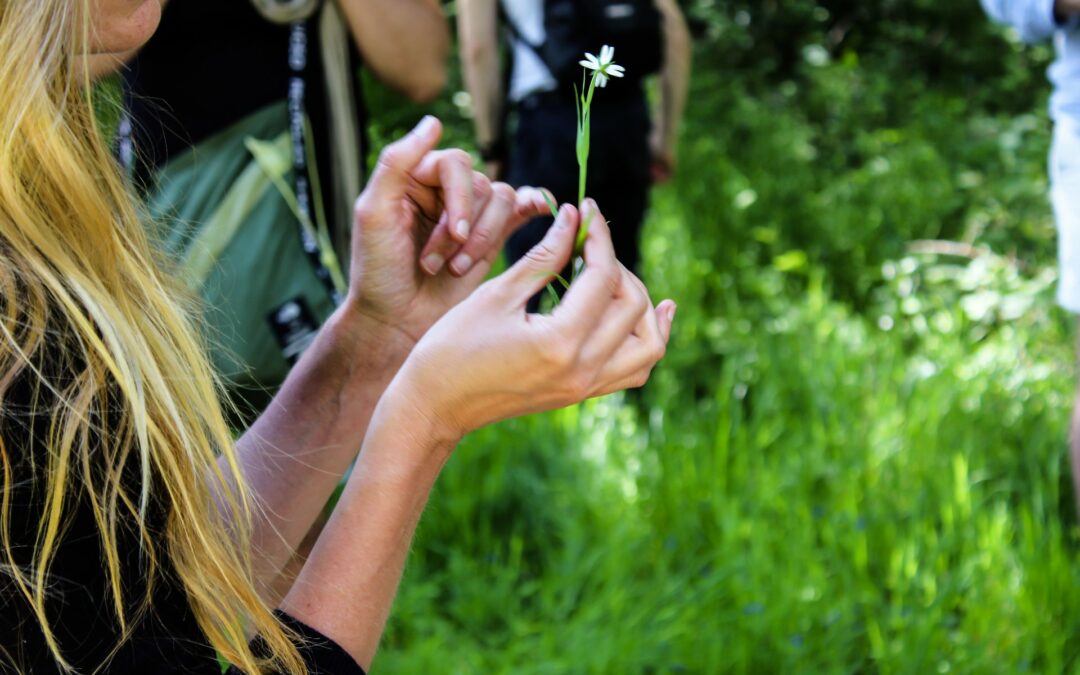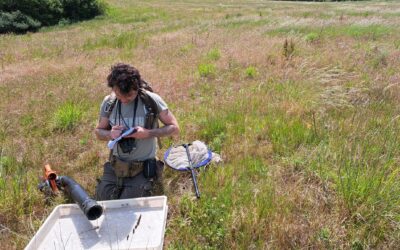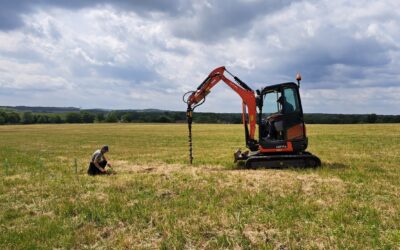I love foraging. There’s something about foraging that embodies the spirit of what we are trying to do at Ewhurst Park, which is about appreciating and reconnecting with nature.
I often refer to Ewhurst Park as an ‘edible landscape’. This is because, when we slow down in natural spaces – and know what to look for – we will see edible plants all around us.
Foraging was a part of life when growing up in Malaysia. We didn’t have to go far to find all sorts of good things. We had aloe at the back of our house – we’d cut the stem and apply it onto our faces to moisturise our skin (especially after too much sun) or make a drink with it. There were bamboo shoots for stir-frys and banana trees with leaves we would wrap food in and steam.

Foraging at Ewhurst Park: Foraged food promises a varied and nutritious diet
Of course, all humans used to be hunter gatherers – and some small communities around the world still rely on foraged food – but in recent years foraging has become a skill that is largely forgotten.
Foraging offers many benefits. It gives people a reason to go into nature, which is helpful for mental health. It’s an intellectually stimulating learning experience – the more you learn, the more you come to appreciate nature. Foraged food gives us an opportunity to have a more varied diet from some highly nutritious and flavoursome plants.
Foraging exposes you to the wisdom of nature: you have no choice but to pick what’s there – it puts you more in sync with nature and what it provides seasonally. When we eat seasonally and source our food locally, we don’t have to force the land with high inputs to grow food out of season or transport it half-way across the world before consuming it.
So what can we expect to find at this time of year? As we enter the height of spring, there is a lot coming up. There are plenty of greens and herbs to look out for. Here are just a few:
- Horse parsley can be steamed or boiled or tossed in butter and seasoned with black pepper: every part is edible, but the succulent stem, flowers and leaf tips are the tastiest bits.
- Bramble leaves are packed with antioxidants and vitamin C and make a delicious, fruity tea.
- Cow parsley, a member of the carrot family, is an all-round herb, though caution is required because it resembles hemlock, which is poisonous – so only eat when 100% sure of its identity.
- Garlic mustard has a mild, peppery garlic flavour – its thin green leaves can be chopped as a herb to add to soups, dressings, casseroles or sauces, or to add to salads and sandwiches (especially cheese).
- Hairy bittercress has a peppery tangy flavour – add its leaves and flowers to salads, soups, salsa, pesto, or use as a substitute for cress.
- Mallow is unlikely to be flowering in April, but its leaves and stems are rich in protein, calcium, iron and vitamin C, and it is used in traditional medicine to treat constipation, diarrhoea, dry throat and chesty cough.
- Wild garlic is a favourite for many, with a flavour that is mellower than cultivated garlic.
- Three-cornered leek – can be confused with snowdrops but has a smell of garlic/onion/chives. Can be eaten raw or cooked.
I hope you are feeling enthused! I’ve heard that up to 50 per cent of the weeds in an ordinary urban garden are edible – most of them are simple winter herbs, just like those from the supermarket, so why do we try so hard to get rid of them?
For me, foraging is a source of joy. It’s an activity that puts us in direct contact with nature; it’s healthy (many foraged plants have medicinal benefits), it’s sustainable, and it offers us a chance to try out some new recipes – which gives me a perfect opportunity to direct you to our friends at www.wildfooduk.com, where you’ll see lots of recipes for tasty treats made with foraged food.
If you’re new to foraging, here is a brief beginner’s guide:
- Have a good field guide to hand so you know what you’re picking. Avoid random social media clips. Instead, try a tried and tested website such as totallywilduk.co.uk
- Don’t eat anything unless you’re absolutely certain you know what it is. Start with plants you’re sure of. You’ll quickly build knowledge and confidence.
- Take no more than you plan to consume.
- Foraging is legal, but don’t trespass, avoid nature reserves and protected sites, and don’t pick endangered species.
- Only forage for personal use.
- Only collect flowers, leaves, fruits and seeds where they are in abundance.
- Leave plenty behind for birds and other species to eat.
- Only take mushrooms with opened caps (these are likely to have dropped their spores). Avoid small ‘button’ mushrooms.
- If you’re concerned about hygiene, pick away from paths where people and dogs haven’t trodden!




